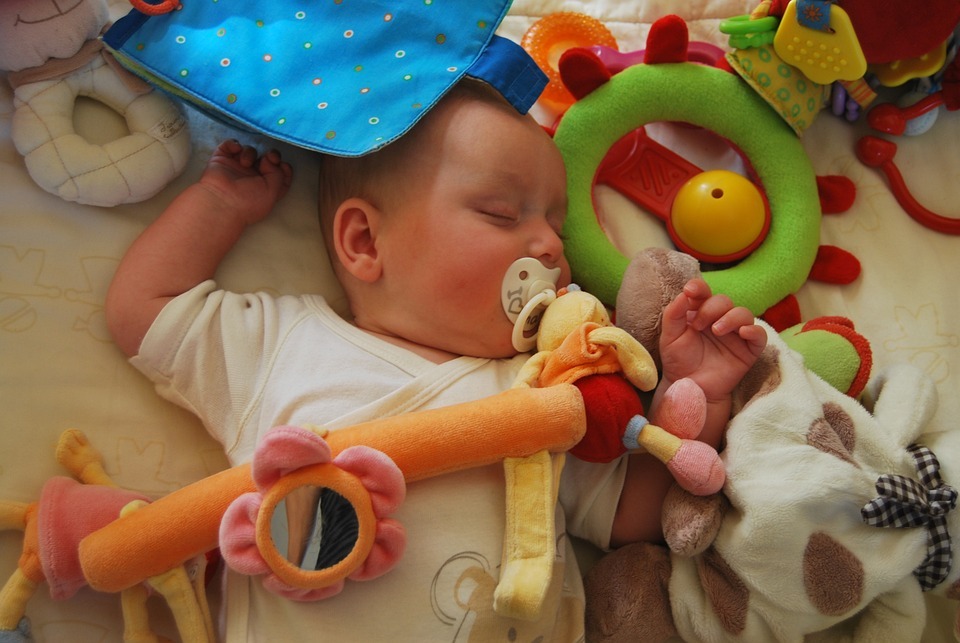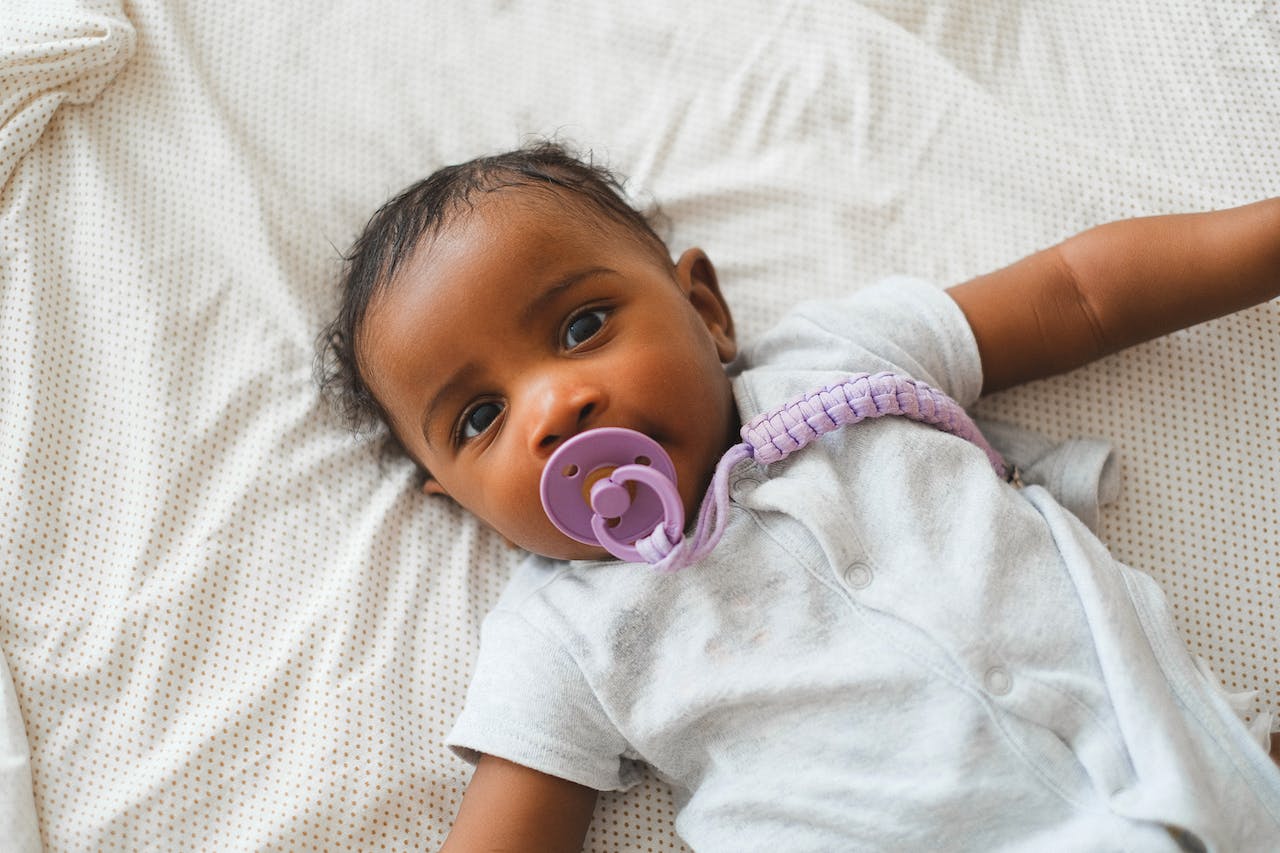For first time mothers, it is essential to have pacifier clips to avoid frequent pacifier sterilizing. It is a normal to have days where most babies play with their pacifiers and throw them at germ-infested places; however, it is stressful.
What Is a Pacifier Clip?
What is a pacifier clip, and why do parents need them for their little ones? A pacifier clip attaches to your baby’s clothes with a metal or plastic clip that connects to a short cord. The other end of the pacifier has a string that you’ll loop through the pacifier to keep both connected. Pacifier clips also help prevent the pacifier from getting too dirty since your little one won’t place it on the floor.
How many should parents have?
The number of pacifier clips you need is a matter of opinion. While you need at least one to ensure you don’t lose the pacifier, some parents have two as a backup. Other parents have a small collection of pacifier clips in different colors so that they can coordinate them with their baby’s outfits. Keep in mind, pacifier clips do have a lifespan and should be discarded after 2 months of continued use.
Some mothers tried the ‘easy yet really dangerous’ way to keep pacifiers from missing: pinning it on their baby’s clothing using safety pins. To avoid possible mishaps and safety pin accidents, there are better alternatives that first time mothers can consider. Similar tips and baby tutorials are circularized in several online communities at www.foxybingo.com and online websites for women such as tipjunkie. A great DIY Pacifier Clip below is few of the safest ‘must-have’ accessories:
What you need:
- Fabric of any kind
- Ribbon or Bias tape (preferably 6 inches for each pacifier clip)
- Suspender clips (also available in several craft stores normally come in two per pack)
Procedure:
- First, fold the fabric in half and stitch with ½ inch seam margin.
- Second, turn it right side out and press the allowance in the middle.
- Insert 1 ½ inches of the fabric through the suspender clip.
- Next, turn under ½ inch of the end then pin.
- Then sew with a straight stitch to hold it in place.
- On the other end, fold over ¼ inch of the fabric and insert 6 inches of ribbon, folded in half.
- Finally, stitch close to the edge to close the end and keep the ribbon in place.
You can also attach toys and teethers, in case your baby begins to grow teeth. Just simply insert and sew the ribbon through one of the tiny holes. Plus you can sew laces, ruffles with bows to add style if you desire to make really girly versions.
Don’t want to make your own – hover here for more ideas.
You Should Prioritize Safety
Safety comes first when it comes to all you need to know about pacifier clips, as it does with other baby-related products. Like pacifiers and teethers, pacifier clips are not toys and should never be used as such. Wear and tear is possible. Before each usage, be sure to check your pacifier clip, and throw it away at the first indication of damage.
Clean it regularly
If your infant utilizes the pacifier clip as a teether, you should clean it frequently. The majority of specialists advise cleaning the pacifier every day, so try to do the same with the clip. As the two will be joined, it will be simple to clean both your binky and pacifier clip at the same time.
Don’t let your baby sleep with it
Don’t let your newborn to sleep with this clip if you can’t watch them since it’s dangerous. Despite the fact that pacifier clips must adhere to strict restrictions, they are neither toys nor meant to be left with a baby alone. If you leave the room or your child is hidden from view, you should remove the clip.
Be wary of choking hazards
According to experts, pacifier clips shouldn’t be more than 8 inches long. In particular, if it becomes wrapped around your child’s neck, a cable that is excessively long might provide a choking risk. Thankfully, the majority of cables adhere to this standard, and you can confirm it by reading the product description.
Only buy quality
There are a ton of pacifier clips available—that much is obvious—but it doesn’t mean you should. Eliminate pacifier clips with shoddy craftsmanship or protracted cables to narrow your search. Despite the fact that some pacifier clips are attractive, they aren’t always secure. Try to buy from businesses that independently test their products to meet CPSC guidelines for small parts and usage and abuse.
When Were Pacifiers Invented?
In the early 20th century, pacifiers were developed. In 1901, a Manhattan company filed a patent for the modern pacifier. The first pacifier featured a natural rubber nipple (also known as “India rubber”) linked to a disk-shaped cover that prevented swallowing. The original pacifiers were typically made of natural rubber and were initially advertised in 1902 by Sears Robuck & Co. as a “new style rubber teething ring”.
Christian W. Meinecke, a pharmacist from Manhattan, is credited with creating pacifiers. Nothing is known about Meinecke, save that he invented a number of medical gadgets with somewhat unappealing names, including the “sputum cup and holder,” and submitted a patent application for the first modern pacifier in 1901, dubbing it a “baby comforter.”
Pacifiers Through the Ages
Pacifier-like items have been in use for a very long time. Several societies provided teething and comfort toys for infants made of wood, stone, ivory, bone, or even coral. Later versions of these toys included metal, gold, gourds, corn cobs, sugar canes, or little linen bags with sugar. They were occasionally doused or covered with brandy, honey, or water.
Rubber “elastic teething rings” were offered to British families as teething toys for infants in the middle of the nineteenth century. The first contemporary pacifiers—the ones you are probably familiar with today—were developed and distributed in the United States less than a century later. As more information became accessible and as time went on, pacifier designs substantially improved.
Alternate Names
You may recognize some or all of the names for pacifiers, such as “paci,” “binky,” or “dummy,” but there are many other terms that have been used over the years.
The term “binky” became popular in the 1940s when pacifiers produced by Binky Baby Products of New York became so widely used that the name of their company became an informal term for the product. The exact origin of the name “pacifier” is unknown, but it may have come from the first baby comforters, which were sold in the U.S. as “pacifiers.” Pacifiers are also frequently called “dummies” in Canada and Britain.


